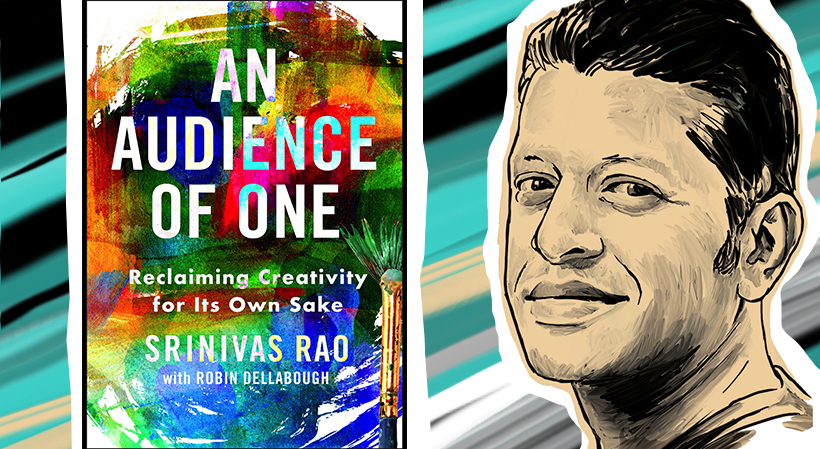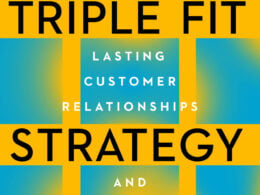The following is excerpted from “An Audience of One: Reclaiming Creativity for Its Own Sake” by Srinivas Rao, published on August 7, 2018 by Portfolio, an imprint of Penguin Publishing Group, a division of Penguin Random House, LLC. Copyright © 2018 by Srinivas Rao.
Creative partners: two-person teams
One of the great myths of creativity is that of the lone creator or genius. In studying creative teams, author Geoff Colvin discovered that “each consists of a boss who became famous and a much less famous number two who devoted his career to the success of the enterprise.” You see the result of creative collaboration in dozens of creative two-person teams.
A creative duo from the entertainment world is Matt Damon and Ben Affleck, who collaborated on the Oscar-winning film “Good Will Hunting.” The partnership began in high school when they began holding meetings during lunch and established a joint bank account to fund their trips to New York City for auditions. When they watched a movie with their friends, even if it was terrible, Affleck would share what he thought would have made it better.
In addition to writing together, they both sang each other’s praises to the movie directors they auditioned for. Reflecting on the success of “Good Will Hunting” and his partnership with Affleck, in a conversation with “Off Camera” host Sam Jones, Damon said, “When the movie came out, because my part was bigger and I played a genius, people thought that I must have done more of the work,” but “we could not have done it without each other.”
In Damon and Affleck, we see a number of traits that make it possible for creative pairs to succeed: a strong friendship that had been built over many years, a lack of envy of each other’s success, and a willingness to speak on each other’s behalf when it came to opportunities for leading roles. Their generosity of spirit strengthened their creative spirit.
Danielle Weisberg and Carly Zakin, cofounders of the daily newsletter The Skimm, are another powerful creative team. They met while studying abroad in Rome; several years later, they reconnected and became “professional storytellers, as producers for NBC News—working in breaking news, political news, and documentaries.” Eventually they became friends and roommates as well as colleagues. Their mutual passion for news and stories led to the formation of The Skimm, which today reaches millions and whose readers include celebrities like Oprah Winfrey.
The right partners expand your creative universe. What once appeared impossible suddenly becomes doable.
What makes for great creative pairs? How do they stay productive instead of becoming competitive? And what leads to the dissolution of certain partnerships?
Related: The Unmistakable Creative on Why Best Practices are Your Worst Enemy
Confidence, trust and commitment
Confidence and trust are two of the most critical elements to the success of any creative pair. You have to have confidence that the other person is not only capable of doing what they say they will, but will actually do it. This is also how trust is built. “For pairs to jell, it’s essential that confidence deepen over time, that each find the other reliable,” says Joshua Wolf Shenk, author of “Powers of Two.”
You want your creative partner to have a pattern of following through and an equal level of commitment to the success of the partnership. When one person is doing all the work in a partnership and the other is simply along for the ride, the partnership inevitably will disintegrate.
The dreamer and the doer
In many creative pairs the dreamer is the one with an endless array of ideas, while the doer makes the execution of those ideas possible. It’s not that the dreamer doesn’t do any work. In fact, a dreamer does just as much work. But doers keep dreamers focused. And each has some tendencies of the other, which amplifies creativity in both of them.
No ego or envy
For a creative pair to succeed, nobody in the pair can put themselves above the other. Ego and envy must be out of the equation. If one person is envious of the success of the other, that envy can quickly turn into resentment, while ego and a sense of entitlement can destroy a fruitful partnership. Creative pairs have to celebrate each other’s success and achievements in order to thrive. “We’re in this together” is the attitude that successful creative duos have. They’re as committed to the greater good as they are to their individual well-being.
Sign Up: Receive the StartupNation newsletter!
Larger teams
Whether it’s building companies, writing books, recording albums, or making movies, a team is often behind major creative accomplishments. Behind the scenes of every success are a lot of people who make the accomplishments of the person in the spotlight possible.
The Unmistakable Creative podcast, the books I write, and all of the creative output of our company is a collaborative effort. None of it would be possible without the help of other people. While I might be the face and voice of the Unmistakable Creative, about a dozen people make the work possible:
- Guests offer their time to share their wisdom and insights with our listeners.
- Fans support our work by buying books, listening to the show, and sharing what we do.
- My business partner, Brian Koehn, and copywriter, Kingshuk Mukherjee, all keep things running smoothly.
- Mars Dorian, our special projects artist, adds an unmistakable signature to our work.
- My editor, Stephanie, has bet on my ability to produce a book and then edits it into the best possible version.
- My agent, Lisa, makes sure I get paid fairly, negotiates the best terms, and acts as my personal cheerleader.
- My writing coach, Robin, keeps me on track and pushes me forward on big creative projects.
Your team functions as a form of emotional support. When all you want to do is quit, a team encourages you to keep going. Numerous studies have shown that by going through difficult experiences together, the team forms a stronger bond. Y Combinator president, Sam Altman, says that they invest in only about one out of 10 solo startup founders: The failure rate for people working alone is simply too high.
The right partners and team members also enable you to accomplish far more. The quality and volume of my personal creative output improved significantly after we built a strong team. Shortly after we hired our content strategist, Kingshuk Mukherjee, he increased the conversion rates on our website and the open rates on our newsletter. He also shaped our Sunday newsletter into what we had been attempting to create for two years: an interesting and fun to read collection of stories and ideas from around the internet.
In your own search for creative collaborators, it’s important to understand your strengths and weaknesses. The natural temptation is to partner with people who are just like you, but this is a recipe for disaster because you share the same weaknesses, and as a result those don’t get addressed.
“An Audience of One: Reclaiming Creativity for Its Own Sake” is available now at fine booksellers and can be purchased via StartupNation.com.







